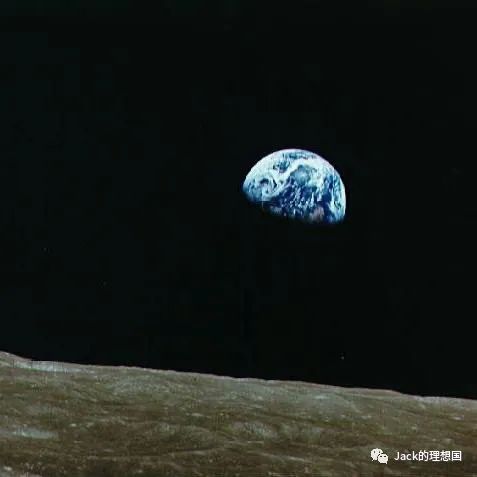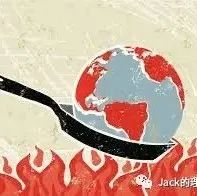Links Between East and West 22 The World Ahead 东西方的连接22 - 未来世界

Introduction
The world is heading into volatile and fragile times. Across the world, the pandemic era is marked by pessimism and a significant retreat in global cooperation. The Russia-Ukraine conflict and Nancy Pelosi’s recent visit to Taiwan are significant events that add to this pessimism and chaos in the international order.
In my article “15 Thoughts for 15 Years of Life”, I roughly explained three thoughts or predictions for international politics, the world economy, and cultural communication. Now, with an increase in the possibility of escalation between the eastern and western hemispheres, it is relevant to explain my predictions in more explicit logic.
The Future of International Politics
For international politics, I share the pessimism that many display. Concerning international relations, the sheer number of issues to address is daunting. War and regional instability in Ukraine and elsewhere are just one aspect. The deeper problem lies in the attitude of global politicians towards the rise of nationalism combined with more extreme forms of populism. Different pieces of historical evidence, such as Nazi Germany, point to the likely harm nationalism and populism can bring to political stability. Today, some international politicians are not only turning a blind eye to the expansion of potentially detrimental spirits, but they are also even encouraging the growth of these spirits. One proof is how the education and propaganda systems (which can be strongly influenced by politics) in many countries nurture nationalists who only appreciate their own culture and ignore other cultures. Such kinds of nationalists are not conducive to the stabilization and development of status quo relations.
The political stalemate between China and the U.S. is also worrying. For the past five years, governmental relations have only worsened to many degrees. For China, although some recognize the U.S. as a nation that people can learn from, more view it as a hostile force that constantly disrupts international order and breaks its promises. For the U.S., both the Trump and Biden administrations have viewed China as a potential threat to its hegemony and have attempted to take active steps to undermine its growth in power. Both parties have been staunch in their respective stances, and neither side has been willing to back up. Following Pelosi’s visit, relations are expected to take a further dip.
It is dangerous to underestimate the impacts this stalemate on the political level will cause. For one, both China and the U.S. are nuclear superpowers that can seriously alter the pattern of global politics. The situation today is almost comparable to the Cold War in the late 20th century between the U.S. and the Soviet Union. Back then, decisions made by either country could lead to disasters worldwide. Today, the conflict between China and the U.S. has already seen its wider repercussions. Countries are choosing sides. Increased forms of political tension have appeared on various continents. Looking into the future, as this conflict is doomed to become one that involves global nations, every word of confrontation from Chinese and American politicians will speak to the world. Once situations evolve that far, negative impacts can be more frequent and catastrophic.
For another, rising tensions are usually accompanied by a greater probability of miscommunication or miscalculation. From the military perspective, Chinese and American military forces are experiencing increasingly closer encounters in the Pacific region. This means that should a misfire from either side occur, a military standoff is on the line. From the governmental perspective, escalation can prod leaders to make less sensible and thought-out choices, further increasing political miscommunication risk. For example, the Cuban Missile Crisis, the product of political escalation between the Soviet Union and the U.S., almost resulted in a severe miscommunication that would eradicate the world order. Although eventually, both governments resolved the Crisis subtly, one cannot blindly trust the mind of leaders under such tense circumstances.
The Future of the World Economy
As argued in a previous essay, I take a more optimistic stance on the world economy. It is too early to conclude that a worldwide recession is happening. Moreover, economic globalization is not as fragile as many perceive, and recovery from the blows of the pandemic is still possible.
At the root of recession worries is a fear that GDP growth will stall coupled with a prediction that monetary tightening is currently ending the party altogether. Both concerns are too soon to be substantial. First, GDP contraction in recent quarters does not imply that the underlying performance of the world economy is weak. As The Economist points out, “[GDP contraction] would count as a recession by one rule of thumb, but not necessarily by others.” One must consider other factors, such as employment, real income, and real GDP. For several large economies, such as China and the U.S., some of these factors are performing fine. For example, the unemployment rate in China has been gradually falling in the past several months, and technological innovations in the U.S. are still fueling economic progress. As a result, global economic performance is not as poor as many think.
Second, the fear that contractionary policies in various countries will end economic expansion is too early to become true. Take the example of the U.S. Admittedly, looking at history, since 1955, there have been three periods when different rates climbed to current levels of prediction: 1973, 1979 and 1981. In each case, a recession occurred within six months. However, both fiscal and monetary policies are known to possess significant time lags. Interest rate changes can take up to 18 months to fully come into effect. The Fed has begun “quantitative tightening” starting roughly from June, and according to Jerome Powell, the Fed’s chairman, the markets, in general, are looking stable. Thus, it is too soon to claim that central bank tightening is taking a heavy toll on the U.S. economy or other economies.
Economic globalization is also not as fragile as many believe. The main point is that economic globalization does not rely too much on mutual values to prosper, only requiring nations to believe in the power of money and trade. An essay written by the National Bureau of Economic Research (“NBER”) demonstrates that while China and the U.S. have been locked in a bitter clash, the export and trade volumes of bystander countries have risen - calculations reveal that the “trade war raised global trade by 3 percent” from 2018 to 2019.
A brief analysis of history helps show the robustness of economic globalization more. From the 1500s to the 1200s BCE, the Bronze Age world, from the Fertile Crescent in the Middle East to the Mediterranean region, flourished under the first international economic network. Definitive pieces of evidence display trading activities between modern-day Syria, Egypt, Turkey, Cyprus, and Greece. In the late 1200s BCE, the Bronze Age world collapsed due to unclear reasons. However, economic globalization did not die out. It ascended to a higher level. In the 640s BCE, the Lydian Empire made history by issuing the first coins, signaling a groundbreaking development in the efficiency and effectiveness of trade. The subsequent international networks, namely the Silk Road, all demonstrated that economic globalization would persist in innovative ways even under obstacles.
Finally, I feel optimistic about the world economy because global recovery and a strong bounce-back are still feasible. Several prerequisites are fulfilled for this recovery. One is household saving, which is imperative for growing consumption and investment. Data shows that households in the rich world have accumulated some $3trn in “excess” savings during the pandemic. According to the JPMorgan Chase Institute, “the cash balances of poor households [in the U.S.] were 70% higher in March than they were in 2019.” Another prerequisite is consumer confidence in their personal finances. Confidence leads to more spending and investing behavior. A study by The Economist illustrates that across the E.U., an economic zone taking up 1/6 of world GDP, “households are about one-third more likely to be positive about their own finances than they have been, on average, since the data began in the mid-1980s.” Trackers that document consumer spendings, such as the Bank of England and JPMorgan Chase, also report positive signs.
The Future of Global Cultural Communication
The future of global cultural communication is facing a retreat. The rise of nationalism and populism on the cultural level is worrying. People who fanatically defend every cultural aspect of their nation and vehemently refuse to learn from other cultures are increasing in numbers. Suppose these so-called die-hard nationalists or online mobs become more powerful and less restrained. In that case, they can stifle cultural communication on the most basic level, and hatred can proliferate in the populace. For example, a recent poll reveals that about 80 percent of Americans display solid dislike towards China, a rise of almost 13 percent. One can find similar numbers in China too. In that case, it is even harder to reconcile conflicts and divides, as neither the government nor the ordinary people are willing to take a step forward.
Further, different kinds of cultural conflicts are looming on the horizon. Religion is a cultural element that has led to deep clashes. For example, the Middle East's Sunni and Shia Islamic conflict is still raging. Religious discrimination is becoming more prevalent even in developed countries where religious freedom is more valued. People are viewing religion increasingly as a disruptive force, and tensions have been rising. Religion also was the cause of massive conflicts in the past. The war forged between the Catholics and the Protestants in Europe in the 17th century was one of the bloodiest in human history. The struggles between Christianity and Islam have lasted for millennia.
Race is another form of cultural conflict that must be urgently dealt with. Racism and other kinds of discrimination are not just limited to the U.S. They are present in Asia and different continents. In the U.S., along with hate for black people, Asian hate is also getting much attention recently. Racial discrimination is a natural phenomenon that cannot be naturally avoided or quelled. It needs de facto action from governments and, more importantly, the common public.
Conclusion
Overall, the world is filled with challenges and obstacles that test the resolve of global leaders. While mistakes will be inevitable, history has shown again and again that there will be solutions to a dilemma. There will always be a new, more functioning order that evolves from the ruins of the previous one.
WORKS CITED
The Correspondents of The Economist. “Why It Is Too Early to Say the World Economy Is in Recession.” The Economist, www.economist.com/finance-and-economics/2022/07/24/why-it-is-too-early-to-say-the-world-economy-is-in-recession.
简介
世界正在进入动荡和脆弱的时代。在全世界范围内,新冠时代充满了悲观主义和全球合作的显著萎缩。俄乌冲突和南希-佩洛西最近窜访中国台湾等重大事件,使这种悲观情绪和国际秩序的混乱更加严重。
在我的文章《15岁的15条思考》中,我粗略地解释了对国际政治、世界经济和文化交流的三个想法或预测。现在,随着东西半球之间冲突升级的可能性增加,以更清晰的逻辑解释我的预测是有意义的。
国际政治的未来
对于国际政治,我和许多人一样有悲观情绪。关于国际关系,需要解决许多令人生畏的问题。乌克兰和其他地方的战争和地区不稳定只是一个方面。更深层次的问题在于全球政治家对民族主义与极端民粹主义崛起的态度。历史上不同的证据,如纳粹德国,指出了民族主义和民粹主义可能给政治稳定带来的根本伤害。今天,一些国际政治家不仅对潜在对世界有危害的主义的扩张视而不见,甚至还在鼓励这些主义的成长。一个证据是许多国家的教育与宣传系统(可能受到政治的强烈影响)有意识地培养民族主义情绪,只欣赏自己的文化而忽视其他文化。显然,这种民粹主义者不利于现状关系的稳定和发展。
中国和美国之间的政治僵局也令人担忧。在过去五年左右的时间里,政府关系只是在很多程度上恶化了。对中国来说,虽然有些人承认美国是一个可以学习的国家,但更多的人认为它是一个不断扰乱国际秩序和违背自己承诺的敌对势力。对美国来说,特朗普和拜登政府都将中国视为对其霸权的潜在威胁,并试图采取积极措施来破坏其实力的增长。两方在各自的立场上都很坚定,双方都不愿意退让。在佩洛西访台之后,双方关系将进一步下滑。
低估这种政治僵局所造成的影响是危险的。首先,中国和美国都是核超级大国,可以严重改变全球政治的格局。今天的情况几乎可以与20世纪末美国和苏联之间的冷战相比拟。那时,任何一个国家做出的决定都可能导致世界灾难。今天,中国和美国之间的冲突已经展露其更广泛的影响。各国都在选择立场,各大洲出现了越来越多形式的政治紧张。展望未来,由于这场冲突注定会成为一个涉及全球国家的冲突,中国和美国政治家的每一句互相攻击的话都会让全世界听见。一旦局势发展到这种程度,负面影响就会更加深远,且可能是灾难性的。
另一方面,紧张局势的加剧通常伴随着更大的误传或误判概率。从军事角度来看,中国和美国的军队在太平洋地区对抗愈发激烈。这意味着,一旦任何一方发生误判,军事对峙就会发生。从政府的角度来看,升级会促使领导人做出不太明智和未深思熟虑的选择,这进一步增加了政治沟通不畅的风险。古巴导弹危机是苏联和美国之间政治升级的产物,几乎导致了严重到足以毁灭世界秩序的误传。虽然最终危机得到了巧妙的解决,但在如此紧张的情况下,人们不能盲目地相信领导人的想法。
世界经济的未来
正如前文所论述的,我对世界经济采取了比较乐观的立场。现在就断定世界范围内的经济衰退为时尚早。此外,经济全球化并不像许多人认为的那样脆弱,从疫情的打击中复苏仍然是可能的。
衰退担忧的根源是担心GDP增长会停滞不前,再加上预测货币紧缩会严重减缓经济发展。这两种担忧都是过早的,没有实质性的意义。首先,最近几个季度的GDP萎缩并不意味着世界经济的基本表现疲软。正如《经济学人》指出的那样,"按照一种经验法则,[GDP萎缩]会算作经济衰退,但按照其他经验法则则不一定。" 人们必须考虑其他因素,如就业、实际收入和实际GDP。对于几个大型经济体,如中国或美国,其中一些因素表现良好。例如,在过去几个月中,中国的整体失业率一直在逐步下降,美国的科技创新能力也依旧强劲地推动经济进步。实际上,世界经济的表现并没有像许多人预测的那样糟糕。
第二,关于各国的收缩政策将完全结束经济扩张的担忧,现在成为事实还为时过早。以美国为例,诚然,纵观历史,自1955年以来,有三个时期的不同利率攀升到目前的预测水平:1973年、1979年和1981年。在每个案例中,六个月内都发生了经济衰退。然而,众所周知,财政和货币政策都具有明显的时间滞后。事实上,利率变化可能需要长达18个月的时间才能完全生效。大约从6月初开始,美联储已经开始 "量化紧缩"。根据美联储主席杰罗姆-鲍威尔的说法,市场总体上看起来很稳定。因此,现在声称央行的紧缩政策对美国经济或其他经济体造成严重影响还为时尚早。
经济全球化也不像许多人认为的那样脆弱。主要的一点是,经济全球化并不太依赖相互的价值观来繁荣,而只要求各国相信货币和贸易的力量。美国国家经济研究局("NBER")撰写的一篇文章表明,在中国和美国陷入激烈冲突的同时,其他国家的出口和贸易量却在上升--计算结果显示,从2018年到2019年,"贸易战使全球贸易额提高了3%"。
对历史的简单分析,更有助于显示经济全球化的稳健性。从公元前1500年到公元前1200年,从中东的新月沃土到地中海地区的青铜时代世界在第一个国际经济网络下蓬勃发展。确定的证据显示了现代叙利亚、埃及、土耳其、塞浦路斯和希腊之间的贸易活动。在公元前1200年,晚期青铜时代的世界由于不明原因崩溃。然而,经济全球化并没有消亡,而是上升到了一个更高的层次。公元前640年代,吕底亚帝国创造了历史,发行了第一枚国家硬币,标志着贸易的效率和效益有了突破性的进展。随后的国际网络,尤其是丝绸之路,更表明经济全球化即使在障碍存在下也会以创新的方式坚持下去。
最后,我对世界经济感到乐观,因为全球复苏和强劲反弹仍然是可行的。这种复苏有几个先决条件已得到满足。一个是家庭储蓄,这对消费和投资的增长是必不可少的。数据显示,富裕世界的家庭在疫情期间积累了约30万亿美元的 "超额 "储蓄。根据摩根大通研究所的数据,"[美国]贫困家庭的现金余额在3月份比2019年高出70%"。另一个先决条件是消费者对其个人财务的信心,信心会导致更多的消费和投资行为。《经济学人》所做的一项研究表明,在欧盟这个占世界GDP1/6的经济区,"家庭对自己的财务状况持积极态度的可能性比他们自1980年代中期开始的数据平均高出约三分之一。" 记录消费者支出的追踪器,如英格兰银行和摩根大通,也报告了积极的迹象。
全球文化沟通的未来
全球文化沟通的未来正面临着退缩。民族主义和民粹主义在文化层面的崛起令人担忧。狂热地捍卫自己国家的每一个文化层面并坚决拒绝学习其他文化的人越来越多。如果这些所谓的变得更加强大,更加不受约束,那么最基本层面的文化交流就会被扼杀,仇恨就会在民众中泛滥。最近的一项民意调查显示,大约80%的美国人对中国表现出强烈的反感,上升了近13%。在中国也可以找到类似的数字。在这种情况下,调和冲突和分歧就更难了,因为政府和普通人都不愿意向前迈出一步。
此外,不同类型的文化冲突也在地平线上隐现。其中,宗教是一个导致深刻冲突的文化因素。逊尼派和什叶派的伊斯兰冲突仍然在中东地区肆虐。即使在宗教自由更受重视的发达国家,宗教歧视也越来越普遍。人们越来越多地将宗教视为一种破坏性的力量,紧张局势一直在上升。宗教在过去也是大规模冲突的原因。17世纪欧洲的天主教徒和新教徒之间形成的战争是人类历史上最血腥的战争之一,基督教和伊斯兰教之间的斗争也已持续了几千年。
种族是另一种形式的文化冲突,必须紧急处理。种族主义和其他种类的歧视不仅限于美国,它们普遍存在于亚洲和世界其他大陆。在美国,伴随着对黑人的仇恨,对亚洲人的仇恨最近也得到了很多关注。种族歧视是一种自然现象,无法自然避免或平息。它需要政府的实际决断,更需要普通民众的集体呼吁与行动。
结语
总的来说,世界充满了挑战和障碍,将考验全球领导人的决断力与觉悟。虽然错误将是不可避免的,但历史一再表明,在困境中总有解决方案--总会有一种更新、更能发挥作用的秩序从之前的废墟中演变而来。
- 本文标签: 原创
- 本文链接: http://www.jack-utopia.cn//article/394
- 版权声明: 本文由Jack原创发布,转载请遵循《署名-非商业性使用-相同方式共享 4.0 国际 (CC BY-NC-SA 4.0)》许可协议授权










